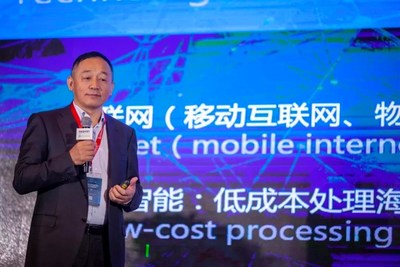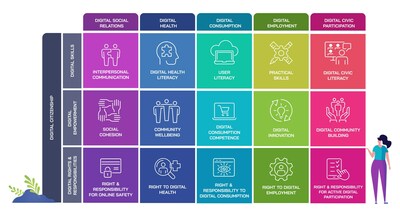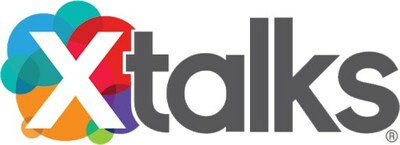Digital Assets: From Frontier to Mainstream – Dr. Xiao Feng’s latest speech
Press Releases
Mar 28, 2019
HONG KONG, March 28, 2019 /PRNewswire/ — Co-hosted by HashKey Group and Wanxiang Blockchain Labs, HashKey International Digital Asset Summit 2019 (HIDA2019) launched at the Four Seasons Hotel, Hong Kong, on 21st March, 2019.

Dr. Xiao Feng, Chairman of Wanxiang Blockchain, delivered a keynote speech entitled “Digital Assets: From Frontier to Mainstream” and he said that digital assets will be the core “assets” of future finance.
The following is a selection of Dr. Xiao Feng’s speech:
The topic of today’s summit is “Digital assets: from Frontier to Mainstream“. We will discuss how digital assets are slowly moving towards compliance: specifically, from technology experiments ten years ago, to financial assets that can be accepted by mainstream financial institutions.
Brian Arthur is an economics professor at Stanford university and the author of many books on how technology drives the economy. I begin today’s speech with the following quote from him: “The economy will change its structure as technology evolves, which is also an institutional arrangement.” Internet technology has brought huge changes to the economic structure and economic system, and blockchain is actually the same.
I have started to focus on blockchain five years ago, and here I would like to introduce my own analytical framework. From the perspective of institutions, the development of Fintech can be divided into three stages:
The first stage has already happened, Fintech 1.0, with Internet and other technology enterprises as the main driving force.
Fintech 2.0 is happening, and since 2016, the FSA and regulators in the European Union have pushed for an open banking regulatory policy. Open banking means that banks should be thoroughly internet-oriented, which means no longer product-centered, but customer-centered. The API is bank’s abilities to export itself, to pay itself, to handle accounts well, and so on. Financial capabilities are no longer presented to customers by products, but are transmitted to various application scenarios with API capabilities. Licensed financial institutions will dominate Blockchain 2.0 era.
What is about to happen is Fintech 3.0, a restructuring of current financial infrastructure. This restructuring clearly shows some trends in 2019. In early March, the so-called Blockchain 3.0 cross-chain mainnet was officially launched, which shows that the Blockchain 3.0 technology is going to gradually mature this year. Meanwhile, it is also a sign that more technical blockchain mainnet will be launched sooner or later.
JP Morgan has released its own blockchain application, heralding the official launch of business-end blockchain application. Led and driven by mainstream institutions, global mainstream banks may use blockchain technology to reconstruct the clearing network between financial systems in the future. Facebook, the Internet company which has 2.7 billion users, is also considering to use blockchain technology to rebuild its payment network on the customer-end.
Neither the customer-end payment network nor the business-end JP Morgan clearing network is the traditional banking clearing system. Therefore, the core technology of blockchain 3.0 will reconstruct current financial infrastructure.
The new generation of financial infrastructure has the following characteristics. Based on a distributed ledger system, the accounting method is different compared to the traditional finance. Based on cryptography, a digital wallet is a new account. The digital assets stored in this account are also different from traditional asset classes. Meanwhile, the transfer, transaction and exchange of these assets no longer need any intermediary institutions but algorithms and smart contracts in a point-to-point way, which is the new generation of financial infrastructure.
In 2019, there will be blockchain technological breakthroughs in both business and customer-ends.
Economy is an expression of technology. With a series of new technologies lead to economic growth, the pattern of economic development has undergone tremendous changes. The Internet enables us to collect vast amounts of data at low costs. Artificial intelligence allows us to process and analyze these massive amounts of data at a very low cost, but not without blockchain. Because if the data is not reliable, then despite the fact that the algorithm is good, the results are not reliable. Blockchain is a very cost-efficient way to ensure that a machine with a set of algorithms can yield reliable outcome because the data on blockchain is irrevocable, cannot be deleted and traceable.
Combine above-mentioned three technologies will boost economic growth altogether by enabling us to process, collect and store data more cost-effectively and more reliably.
Not only has the pattern of economic growth changed, but business organizations have also begun to change dramatically. We know from the famous economic theories that enterprises, as economic organizations, should obtain lower transaction costs than the market. The boundary of enterprise’s advantages lies in the cost. If the internal cost of enterprises is equal to or higher than the market cost, then there is no need for such enterprises to exist.
Transaction costs can be mainly divided into three categories. The first is the information cost because the market needs to pay to collect information. The Internet allows us to collect routine data in a virtual world at a low cost. Many personalized requirements can be easily achieved because the cost of information is significantly reduced.
The second is the trust cost. The Internet is called the information machine, and blockchain is called the trust technology.
And the third is the transfer cost. With the help of AI’s matching algorithms, this type of cost is also much lower. Because of the substantial decline in transaction costs, the value of this organizational form of enterprises in the digital economy drops dramatically under the model of data-driven economic growth. The codes of blockchain, especially the public chain, is open to all. No one applies for intellectual property right on-chain. Blockchain is a completely open and free network without permission, which in turn changes transaction behaviors.
The low cost of mass data has promoted the development of digital economy, and the data has become the driving force of economic development. Algorithms and data are switching business decisions from centralized to decentralized, from top-down to bottom-up. And what this change means is that in a blockchain-based business model, which we call distributed business, is no longer like a traditional enterprise. There needs neither centralized decision making nor a top-down implementation of anything, but both decentralized decision making and bottom-up implementation. Economic decisions are decentralized and we call them markets rather than enterprises.
This new economic model also brought about great changes to property rights. Coase, the famous economist, brought two famous theorems. One is on transaction costs, which explains why businesses exist. The second is on property rights. If the value of the enterprise is so great, of course we should protect the property rights of the enterprise. Without good property rights protection, people will not start businesses because their interests will not be protected.
In the digital economy, the pattern and nature of property rights have changed:
First, after we sell equities of the company, we’re no longer a shareholder, somebody else can be a shareholder while they have all the equity. However, it’s hard to sell the ownership data because it is difficult to separate it completely from ownership as an independent asset.
Second, digital assets have very good replicability, which is not conducive to the protection of intellectual property rights.
Third, digital assets are not like a bottle of water on everyone’s desk. Data can be shared by either one person or 10,000 people. Value sharing in the business of digital assets will boost overall net value. If a mail is sent through the post office, the marginal cost of sending one and 10,000 mails is increased. If it is sent in the form of email, the marginal cost is almost zero. And because of the replicability, after sending the email, the sender still has a copy of the mail, because the data is stored locally on the computer system.
This is the new form of digital property, which is the zero frontier cost of the digital economy. This new form, without the help of blockchain technology, is unlikely to form a digital asset, nor is it investable. Distributed ledger system can ensure that the data not to be deleted, not be tampered-with in a timestamp sequencing manner. Build a set of digital accounts with asymmetric encryption algorithms can ensure that data is not replicated. This is what blockchain has brought about, which the what Internet cannot do. Consensus algorithm establishes fair, equal and decentralized decision-making mechanism and governance mechanisms. Smart contract establishes de-intermediation, automation and point-to-point transaction mechanism.
With the help of blockchain technology, digital property rights have become real digital assets with financial attributes, shares and potentials for investment.
Digital assets are created because of blockchain technology, and I’m talking about digital assets based on blockchain. When it comes to digital assets, we all use the word “Token”, which means password, pass right and use right. The most famous token in the world is the password of American nuclear weapons. Whoever is elected President will have the password, which can be used to destroy human beings.
Token is the use right as well as the access right to a certain door guard to get the password so that you can use this computer system. The SEC has said publicly many times that most tokens are like securities. Token is a security, but not a stock. Stock is the share of ownership and securitization while bond is the sharing of the usufruct of property rights. There is an equity division in the investment bank. That said, bond is the power, you can collect interest, but you can’t participate in the shareholders’ meeting, participate in the governance of the company, because you just hold the creditor’s rights, enjoy the right to profit. Token is the securitization of the right of use in property rights. Token means to have access to something. The core content of digital assets is the share of the use right. To interpret token as the same thing as stock or bond would be to reinvent the wheel. Fortunately, token is not a stock or bond, but a market based on the use right. The global scale of use right is tens of billions, which can be expected.
With the development of digital assets to today, we can classify them from different perspectives, such as original blockchain assets and real world assets mapped to blockchain.
For example, bond has nothing to do with the reality, and all bonds can be transferred on the blockchain. In the future, many real world assets will be tokens and can be traded on blockchain. It may also be classified into either securities or non-securities. Starting in 2018, we are breaking down into two new concepts. In crypto assets, a stable token performs all the functions of a digital currency, such as payment instrument, medium of exchange and store of value. Fiat currencies are present in both token and stock, which are tied to the dollar 1:1. While Bitcoin is not a digital currency because it failed as a currency experiment. Bitcoin is the digital gold. If Bitcoin were a currency, it would be like the currency of Venezuela, which can fluctuate wildly in a year. Therefore, it is not a currency, it’s just an asset. Cryptocurrency and digital assets can also be further divided into utility tokens and payment tokens.
And finally, I’m going to talk about the HashKey Group. Last year, after the SFC issued relevant regulatory guidelines, we established a compliant, professional and innovative new Fintech group focusing on blockchain and digital assets in Hong Kong.
Based on past investment experience, development and application of Wanxiang Blockchain in last five years, HashKeyGroup will rely on the ecosystem established by Wanxiang Blockchain and cooperate with more than 80 global blockchain projects. HashKey Group is based in Hong Kong and will rely on the bay area to better serve the world in the future.
Thank you all.
![]() View original content to download multimedia:http://www.prnewswire.com/news-releases/digital-assets-from-frontier-to-mainstream—dr-xiao-fengs-latest-speech-300820129.html
View original content to download multimedia:http://www.prnewswire.com/news-releases/digital-assets-from-frontier-to-mainstream—dr-xiao-fengs-latest-speech-300820129.html
SOURCE Wanxiang Blockchain



